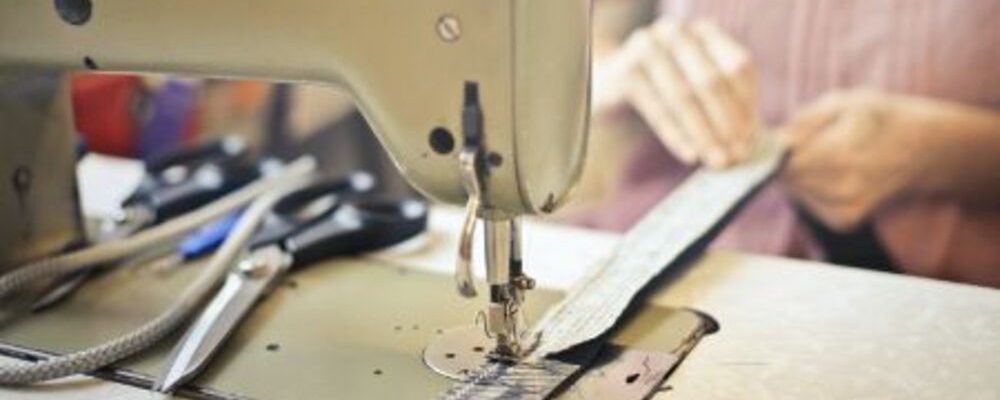Sewing machines typically feature long-lasting metal bodies to help ensure reliable use. These durable machines allow long periods of continuous stitching. Look out for the best embroidery machine for beginners.
Mechanical sewing machines (also referred to as domestic/tailoring machine or treadle sewing machine) feature basic settings which must be manually configured by the user and are much cheaper than their computerized or electronic counterparts.
Hand-operated
Hand-operated sewing machines remain one of the most widely-used types, often employed by beginners or quick repairs at home. Their compact size makes them easy to transport and use; their versatile nature enables them to accommodate various fabrics such as silk and cotton; plus many come equipped with built-in lights to facilitate use even under low light conditions.
This hand-operated sewing machine offers two stitching speeds and can be powered either by 4 AA batteries or an AC adapter, making it lightweight and compact enough for portability. Perfect for those looking to take their sewing skills on the road.
Hand-operated sewing machines may be challenging to operate, but they’re ideal for projects requiring precise control such as repairs and other projects that require precision. You could use one to hem pants, add decorative stitching on clothing items or patch holes or replace buttons.
Electronic
Electronic sewing machines have proven themselves incredibly flexible and useful in recent decades, making projects that were once difficult possible. They come equipped with multiple stitch styles, automatic buttonholes and embroidery designs built into them – yet may cost more than their mechanical counterparts.
However, if you’re unfamiliar with technology or are just getting into sewing, an electronic machine might be too complex for you to operate effectively. Some find them confusing and hard to use; especially those unfamiliar with their digital displays.
Electronic sewing machines may take several days to set up and can be more costly than their mechanical counterparts, yet can save a sewist time with their setup process and can quickly become outdated if neglected. But many find them easier and quicker to use compared to mechanical models – you can even plug a USB drive into it and save embroidery designs directly for use later!
Computerized
Computerized sewing machines utilize an onboard computer system to memorize operations and tension settings, perform precise stitches, download designs, and offer an array of stitch options for embroidery and utility stitching. They can even offer numerous embroidery stitches to choose from!
Telling the machine what to do via its digital display panel on either the front or side, you can control its stitch length and width automatically as well as sew perfect buttonholes with ease.
Some computerized machines integrate seamlessly with home computers and the internet, allowing users to download new stitches and embroidery designs directly. Others connect via jump drive, CD or card reader specifically designed for this task.
Computerized sewing machines offer greater versatility, from garment and heavy-duty sewing, quilting and embroidery projects, as well as quilting and embroidering. However, they may be more complicated and costlier to operate than mechanical ones – they may also be less durable and may need regular maintenance than their mechanical counterparts.
Intermediate
Once you have mastered basic sewing techniques and are ready to advance in your sewing journey, upgrading from a beginner sewing machine to an intermediate one should be relatively straightforward. An intermediate model will help you develop more advanced techniques while producing quality finished products; additionally it enables experimentation with different fabrics and stitches styles.
An ideal sewing machine for intermediate sewers will typically have a sturdy build and offer multiple stitch options, as well as feed dogs to ensure fabric flows smoothly between needle plate and presser feet.
Some advanced machines provide an array of features, from embroidering digital files and customizing stitch length to the millimeter. However, experts often favor mechanical models without microchips because they tend to be easier to repair and less costly; lightweight and transportable options also make them great choices for sewing classes or groups.

